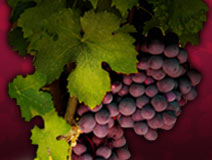Wine sampling techniques:
Yes, Call me a rebel, I prefer the term wine sampling and not wine tasting because to do it properly, it is much more than tasting the wine. You are sampling it using most of your senses.
Wine sampling can be subjective in nature; wine connoisseurs follow some general "guidelines" when judging a wine. It's very easy to learn the techniques of wine sampling, and if you already enjoy wine, learning the nuances will simultaneously increase the pleasure you derive from sampling.
The three steps in wine sampling are: Sight, Scent, and Taste.
Sight:
You can tell much about a wine simply by studying its appearance. The wine should be poured into a clear glass and held in front of a white background (a tablecloth or piece of paper will serve nicely) so that you can examine the color.
The color of wine varies tremendously, even within the same type of wine. For example, white wines are not actually white; they range from green to yellow to brown. More color in a white wine usually indicates more flavor and age, although a brown wine may have gone bad. Where as time improves many red wines, it ruins most white wines. Red wines are not just red; they range from a pale red to a deep brown red, usually becoming lighter in color as they age.
Swirling: Swirling the wine serves many purposes, but visually it allows you to observe the body of the wine.
Scent:
The scent of the wine tells you more about the wine than any other test. Your nose can pick up over 5,000 scents, while your tongue can only taste sweetness, sour, salt, and bitter. Your nose can also tell you if the wine has gone bad (corked).
The swirl ‘releases’ the wine allowing you to smell the aroma, also called the bouquet or nose. After you smell the wine, sit back and take in the aroma.
Try to describe in words what scents you pick up in the wine. Take your time. By labeling an aroma you will probably remember it better. The Court of Master Sommeliers uses the acronym FEW, standing for Fruit, Earth and Wood. Do you notice any fruit, earth or wood scents. These can help you describe the wine.
Taste:
The most important quality of a wine is its balance between sweetness and acidity. To get the full taste of a wine follow the following three steps:
| 1. |
First impression: This is where the wine awakens your senses |
| 2. |
Taste: Slosh the wine around and draw in some air (even if you do look funny in front of your dinner guests). Examine the body and texture of the wine. Do you notice the same tastes as you had when you examined the nose of the wine? |
| 3. |
Finish: The taste that remains in your mouth after you have swallowed the wine. How long did the taste last? Was it pleasant? A rule of thumb is the longer the finish, the better the wine. |
After sampling the wine, take a moment to value its overall flavor and balance. Is the taste appropriate for that type of wine? If the wine is very dry, is it supposed to be?
The American Wine Society has a wonderful wine evaluation form available for download from their website- you can get it HERE.
read about Grape Types and their
Characteristics in white Wines
read about Grape Types and their
Characteristics in red Wines
|


